A web browser needs a stable network connection to browse the internet. However, a slight teething issue might cause the loss of network packets and result in problems with the browser.
In such cases, checking the data packet loss from the terminal or command app, clearing the DNS cache, resetting the network socket, and adjusting the system firewall settings can fix the network connection problem.
In this guide, I have shared written instruction about:
Method 1: Check for the Data Packet Loss with Ping
Before proceeding with any of the advanced fixes, you should re-verify that there are no issues with the network. We can ping google.com and check if the data exchange occurs without losses.
If the total packets sent are equivalent to the received packets, then the loss % stands at 0, and the network issue might be negated. However, if there are indeed some packet losses, it points to your internet issues.
- Head over to the Start menu, and search & launch Command Prompt.
- Type in ping google.com, and hit
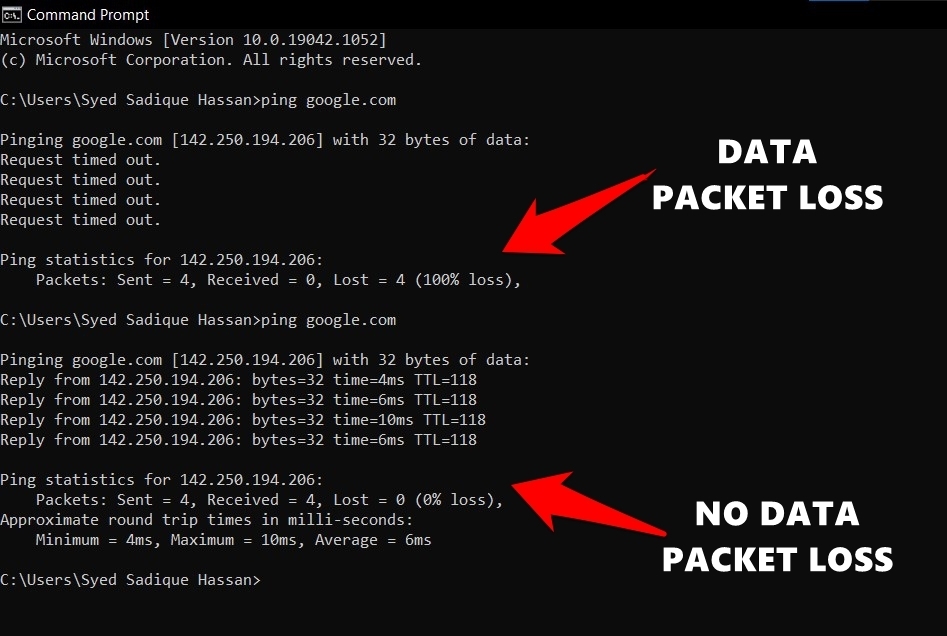 Now verify the results.
Now verify the results.
If data exchange occurs with packet loss, you should try network-related tweaks, such as restarting the router or switching to a different network.
However, before proceeding with advanced troubleshoots, you could try other basic workarounds without data loss.
Method 2: Clear the System’s DNS Cache
The web browser doesn’t deal with the website URL in plain text format; instead, it calls for its associated IP address. These IPs are provided by the DNS servers, which seek the same from the stored DNS cache.
If these DNS cache data are corrupted, then the DNS server will provide an incorrect IP address for the requested site. To rectify this issue, you should consider deleting this DNS cache.
- Go to the Start menu, search cmd, and launch the Command Prompt window
- Now type in ipconfig /flushdns, and hit .
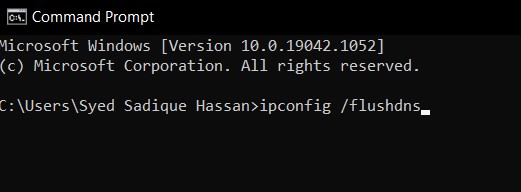 It will delete all the DNS cache.
It will delete all the DNS cache. - Check if it can fix the internet connection, but the browser is not working.
Deleting the DNS cache would take a few extra seconds for the browser to locate the associated IP address.
Similarly, you should consider clearing the DNS cache within the Chrome browser or Edge browser.
Method 3: Reset the Windows Network Socket
Windows Network Socket, or Winsock, contains information related to network configurations. If this information gets corrupted, the system’s internet may not work. In that case, the best bet is to reset this Network Socket.
- Launch Command Prompt as an administrator from the Start menu.
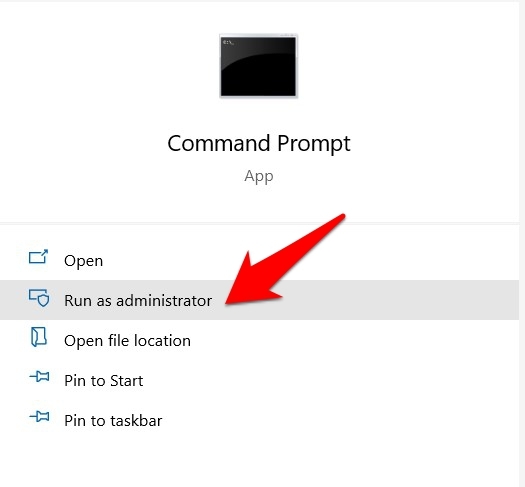
- Type in the below command and hit :
netsh winsock reset
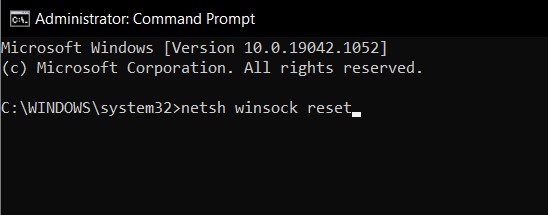
It shall reset your computer network. Once done, restart your PC and check if it fixes the network issue.
Method 4: Update the Network Drivers
Using an old or outdated network driver could result in several internet issues, including those we are currently dealing with. Therefore, using the latest version of these drivers is always advised.
- Keypress + shortcut keys, and select Device Manager from the menu.
- Expand the Network Adapter section.
You should find your driver listed there, either 802.11 B/G/N or A/C. - Right-click on it and select Update Drivers.
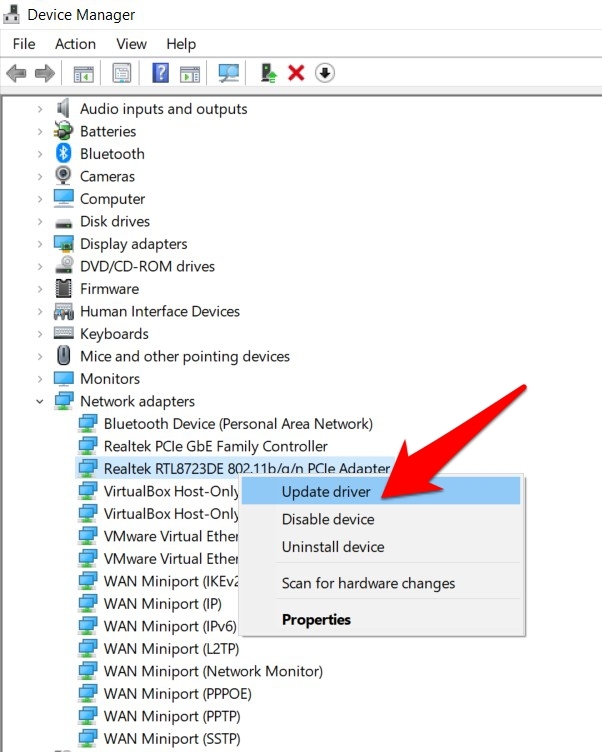
- Click on Search automatically for driver software.
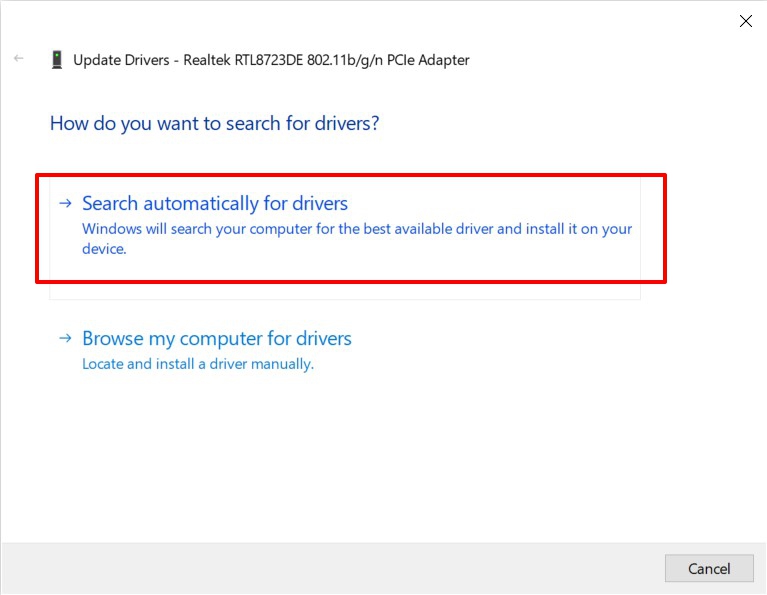
Windows will now search for the latest drivers online and, if found, will download and install them. Once done, restart your PC and verify whether the issue is fixed.
Method 5: Disable the Windows Firewall
If your browser cannot access only a few sites, the issue could be related to the Windows Firewall being slightly overprotective.
If the site’s trustworthiness and belief the firewall has raised a false positive, consider temporarily disabling it.
- Head over to the Start Menu and search Windows Defender Firewall.
- Click on Turn Windows Defender Firewall On or Off from the left menu bar.
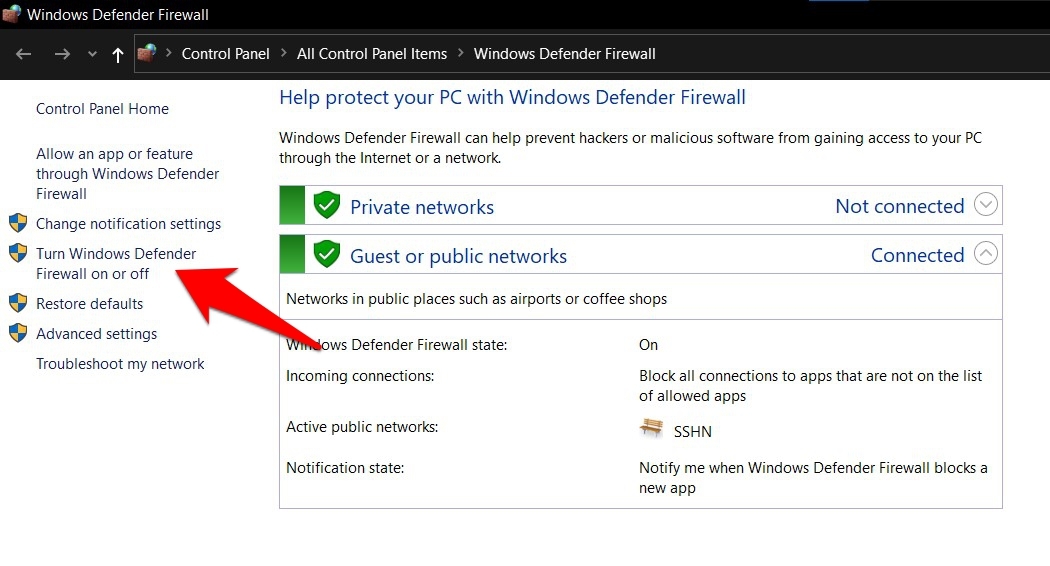
- Select Turn off Windows Defender Firewall under the Public and Private network sections.
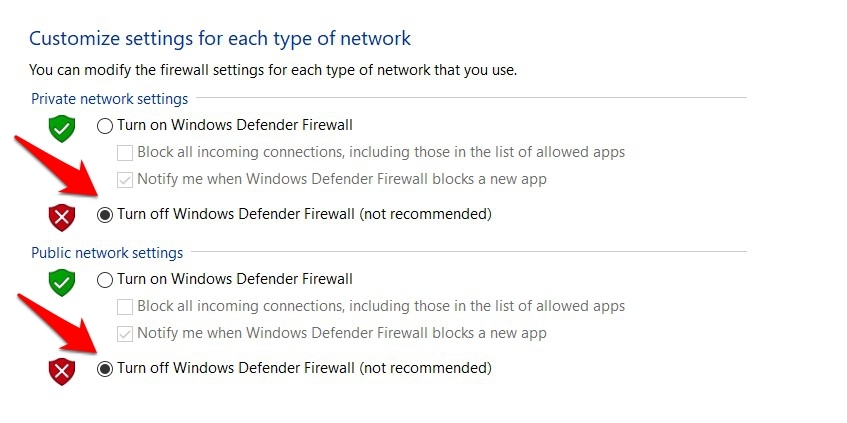
- Once done, try accessing the site and check whether the issue has been rectified.
Disabling the Firewall is a risky bet. So make sure to re-enable it once you are done using the site.
Bottom Line
You should check your data plan to see if you’ve exhausted the bandwidth or data limit of the subscribed ISP plan. Some mobile data plans suspend the internet but still display that it is connected.
Many users have commented that clearing the stored Domain Name Server (DNS) cache and resetting the Windows Network Socket rectified the issue.
Lastly, if you've any thoughts or feedback, then feel free to drop in below comment box. You can also report the outdated information.


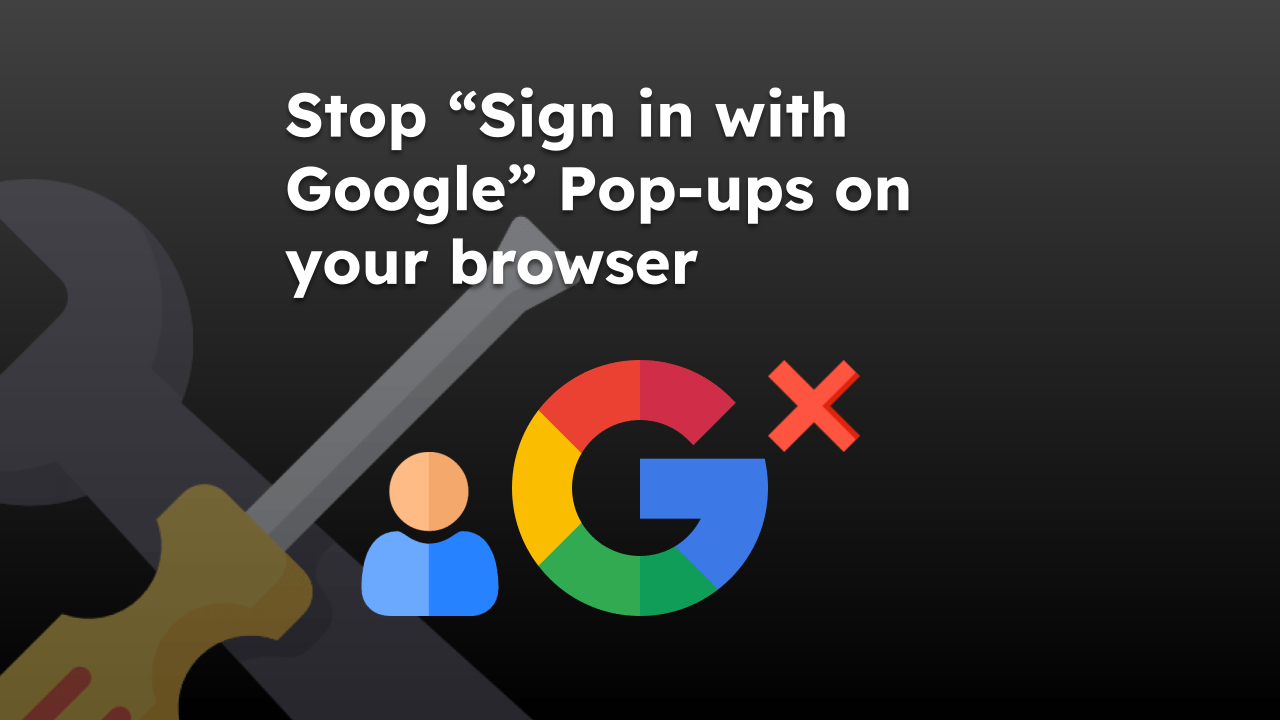
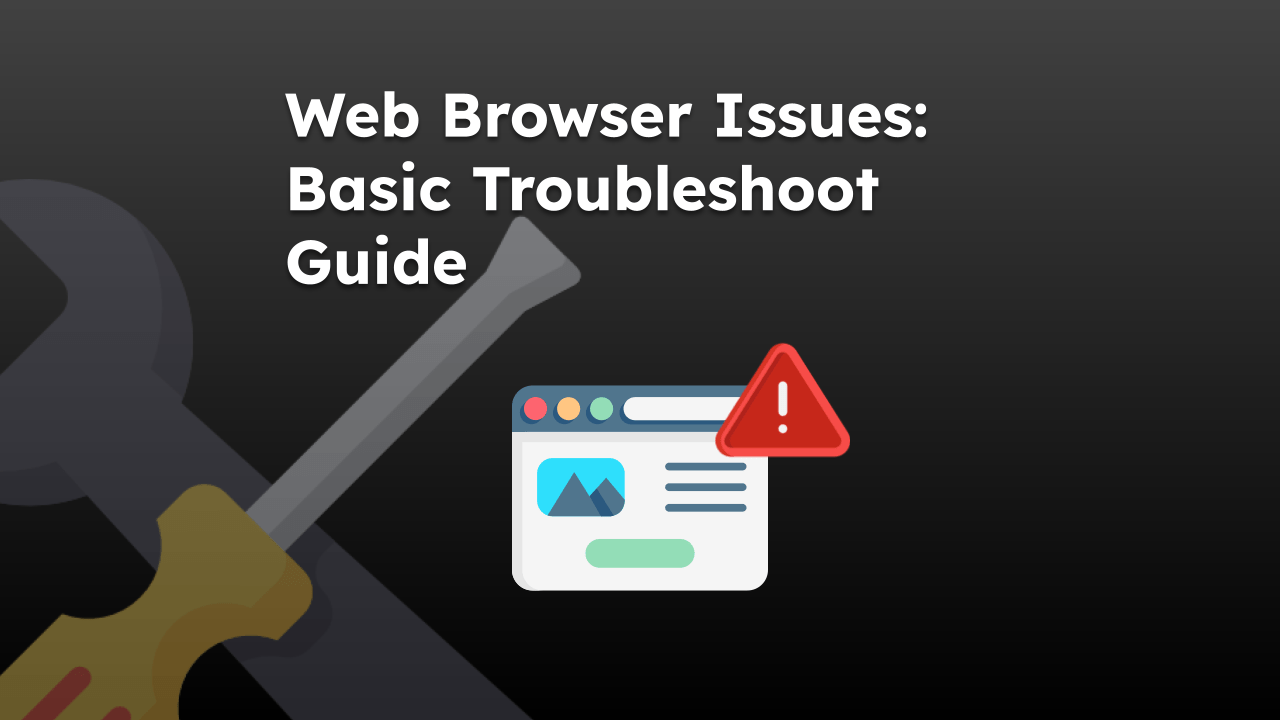
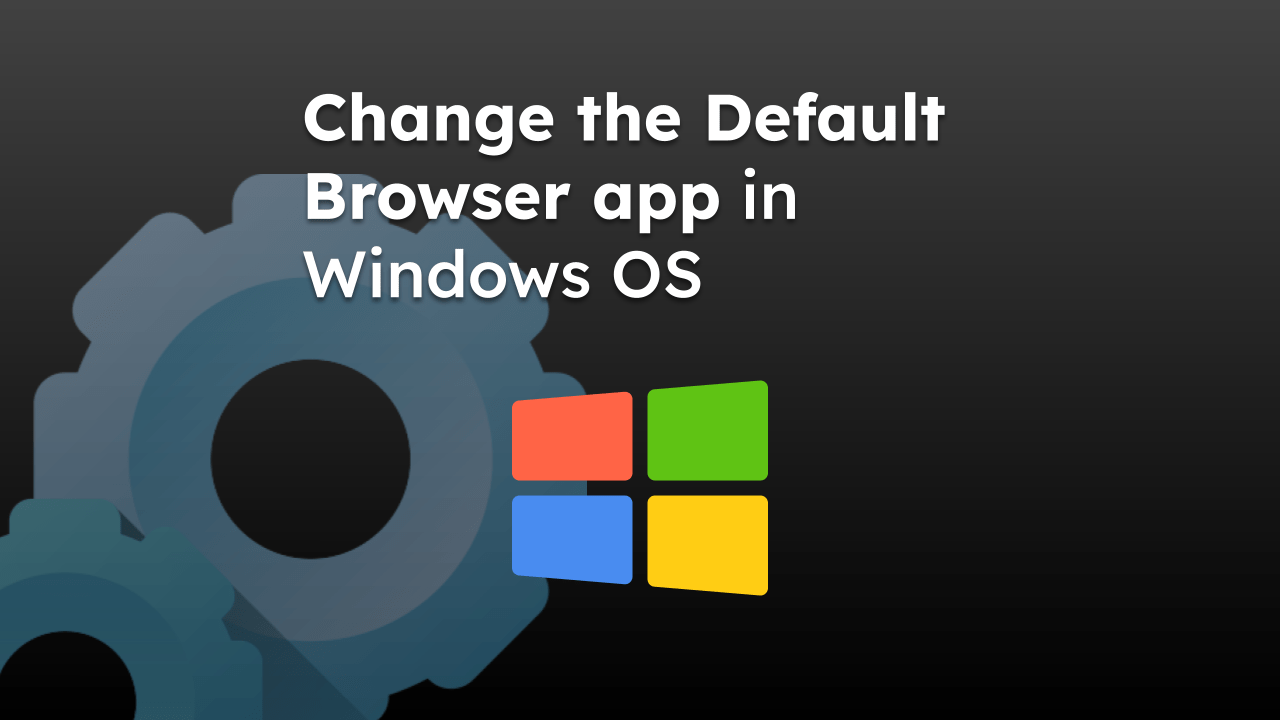
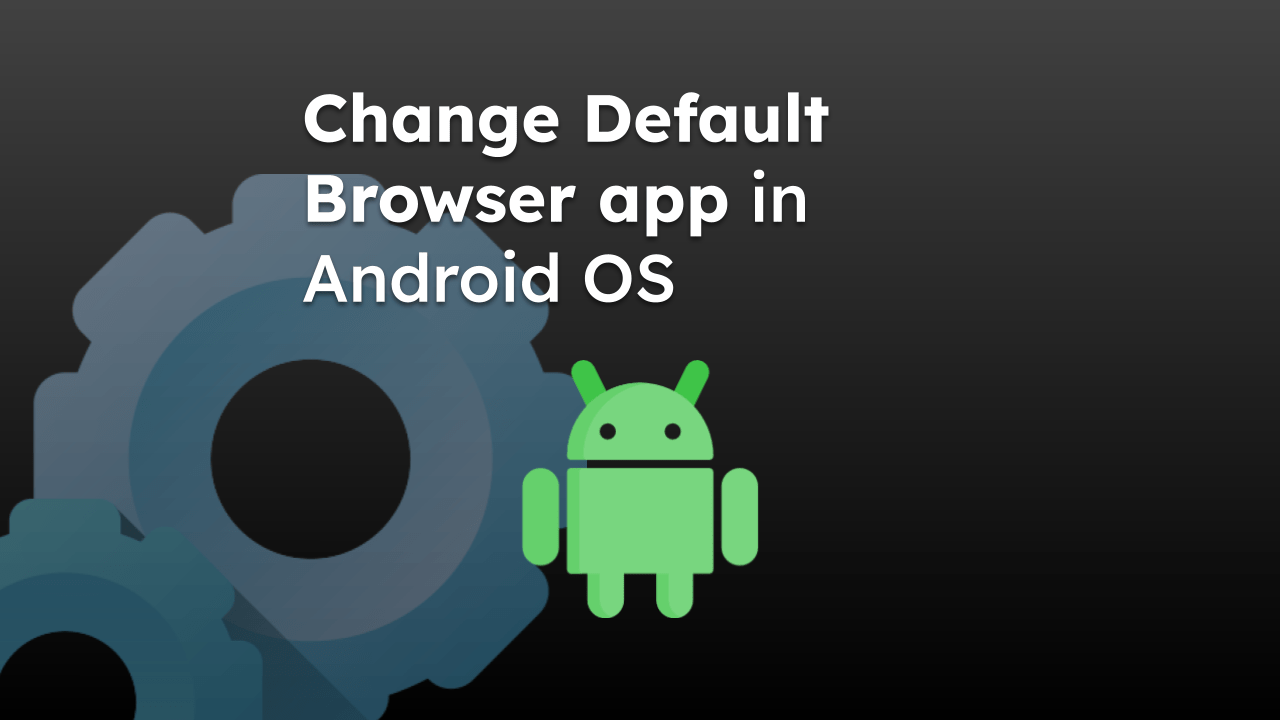
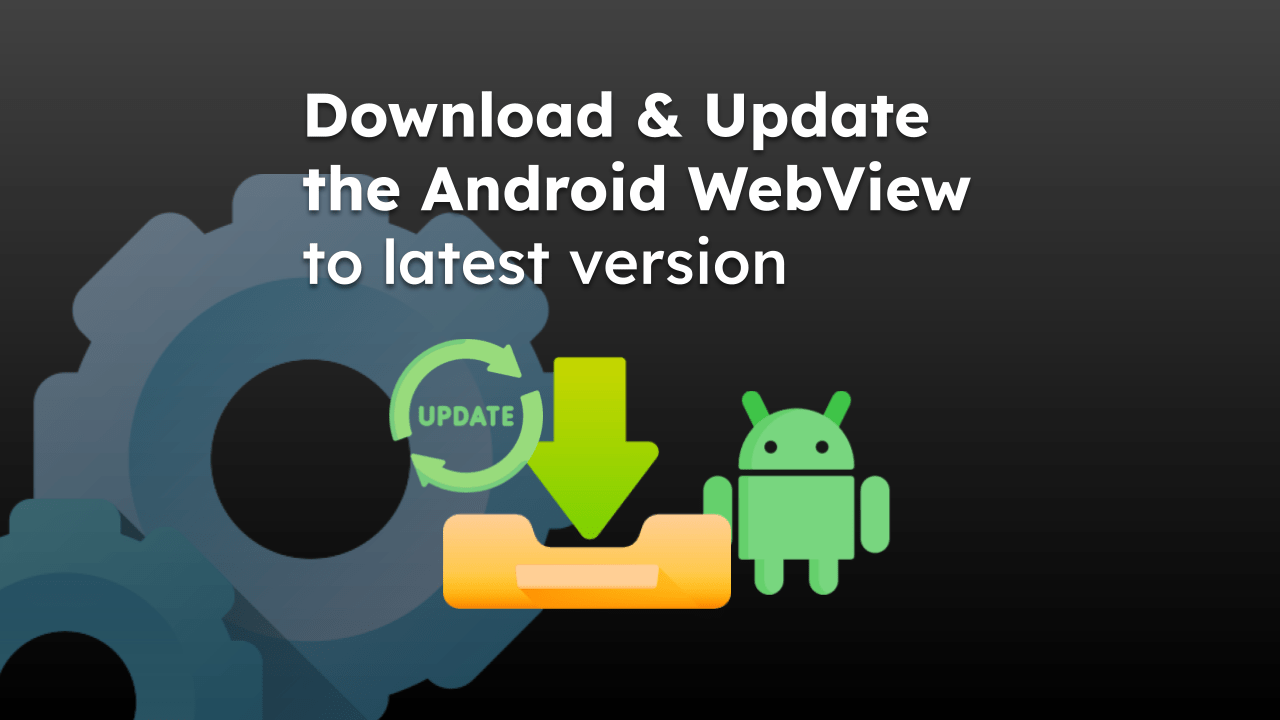
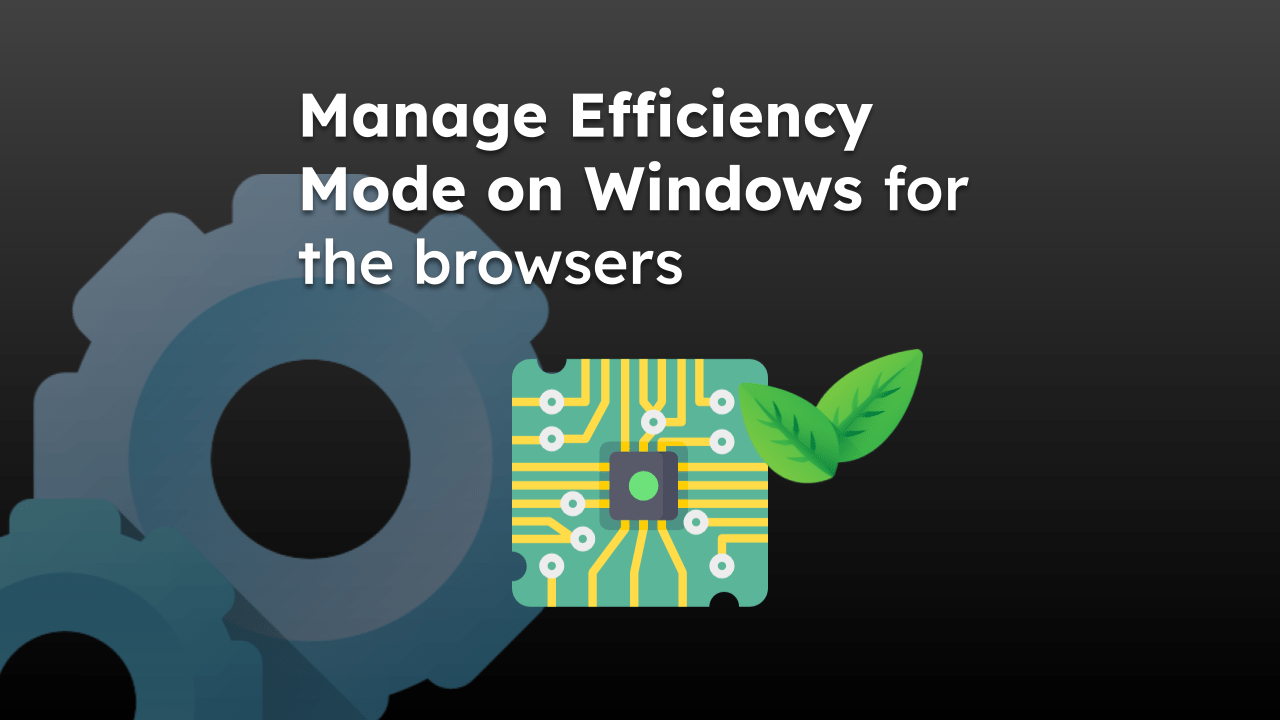
Thanks to the person that wrote this blog. It was very helpful to me. After updating my Window, my browser stopped working but it was working perfectly On my phone and tablet, and sad part is, my phone and tablet were connected to my PC’s hot-spot which indicated that it was an Internet problem.
“Reset Windows Network Socket” Solved my problem, thanks alot.
ipconfig /flushdns command
followed by a PC restart solved my problems. thanks for the tips
Glad to have found this page. I spent the whole afternoon trying to figure out how to resolve the issue where only the Brave browser was working but the rest of the browsers like Chrome, Edge, Firefox could not load any websites at all. Using this guide I tried flushing DNS cache which did not work (likely so as I was not able to access websites even by IP address). Then tried to reset Windows network socket reset and it worked like magic. What a relief! Thank you for putting up this guide.
Wow whoever wrote this page is a big dummy….starts with lets ping Google ok…..(I cant) so he makes and entire page of yes you can……..if my internet was working I would not be searching for help woooow hey idiot my laptop shows full wifi bars and says connected yet NO websites will load on any of my 3 browsers (ie, Chrome, and edge) the even more odd thing is my cellphone can connect and websites do load.
Hey Matt, if your cellphone can connect and load websites on your computer, basic common sense should let you realize that it’s an issue with your ISP rather than your computer or browser. By the way, ISP stands for Internet Service Provider.
You are so polite!
I tried all that you suggested and l still can’t get online on my laptop BUT I can connect with TOR, with TOR I have no issues and therefore it can’t be my ISP.
Clear DNS cache worked for me. Thank you
hi, did you ever resolve this issue with browsers not working? I have tried everything and still no luck. if you have any advice I’d appreciate it.
thanks
seems like you didn’t read through : these fixs are made to help people that have internet WORKING but browser on his own WON’T WORK so if you can’t ping google it means your problem is a simple connection problem.
I have tried every single thing on this post and it still is not working please help!
1. Try disabling the system firewall.
2. Check with other network connection.
Thanks , this help me out. Appreciate the time you put into this article.
Thank you , thank you . Winsock did the trick 😎thank you for making this easy to understand for those of us that are not computer geeks . Very straight forward and easy to do .
The netsh winsock reset fixed the issue I was experiencing – thanks!
When I enter these commands in the command prompt I get “The requested operation requires elevation”
Hi,
I have done all the suggested methods, still internet is not working in any of the browser. But I am able to work on remote desktop server already. Please help to resolve it in any way. Thanks!
I am not sure if that was dnsflush or socket reset, but the browser works well now, Thank you very much!!! Happy New Year!
God bless you
My ‘the internet connection but browser not working issue’ was fixed by the netsh winsock reset process. Thanks
Thank you
Still its not working
Reset Windows Network Socket worked for me thanks!
Thank you so much for this! Resetting the network socket fixed my issue.
network reset did it! Thank you